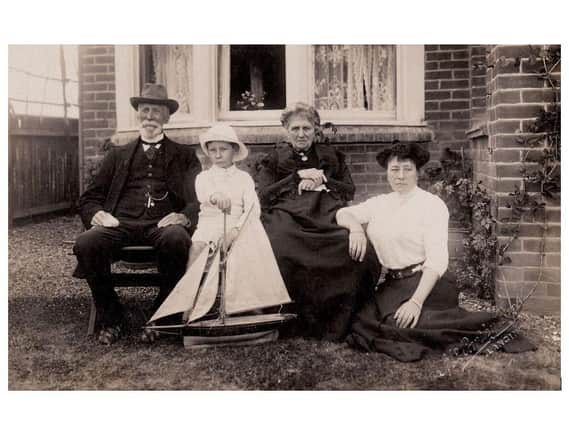Victorian philanthropy explored in a century of Lancing health care


It has been published by Guild Care. The authors are Chris Hare and Lela Tredwell, who both live in Worthing.
Chris explains: “In the years before the welfare state and the NHS, poorer people were entirely reliant on charity for their health care. Few charities did more to help the disadvantaged than the Southern Convalescent Homes, founded by Victorian preacher and philanthropist, William Chorley.
Advertisement
Hide AdAdvertisement
Hide Ad“For decades the poor of London found rest, recuperation and convalescence in the homes opened by Chorley in Lancing. So it was that for over one hundred years, Lancing and the capital were linked together in a joint enterprise of caring.
“This pioneering spirit continued until modern times, with theBell Memorial Home at Lancing offering high-quality care and support until 2016, by which time it was a much-loved home for the elderly of Lancing and the surrounding district.”
The book tells the story.
“The book is the result of a National Lottery Heritage Fund project financed jointly with Guild Care. Over three years a group of Lancing and Worthing volunteers researched the extensive Bell (Southern Convalescent Home) records, including minute books and annual reports. 14 former members of staff and trustees were also interviewed about their memories of The Bell.
“The starting point was establishing a team of researchers who met regularly until the first national lockdown made that impossible. We then identified people who had worked at The Bell and were willing to share their experiences with us. We interviewed and recorded these people. One interviewee, Diane Maisey, had worked at The Bell since 1962.
Advertisement
Hide AdAdvertisement
Hide Ad“When it came to writing up the history, Lela took the period of 1890-1945, and I took the post-war years.
“The book is aimed at people with an interest in local history, the history of health care and English social history in general. This book can be read as a local history, but really it is far more than that. It introduces the reader to the world of 19th-century Christian philanthropy that was carried on with verve and spirit almost up until the time The Bell closed in 2016. Sister Ivy Baldock served The Bell in many capacities from 1938 until her death in 1998 – an extraordinary 60 years of service!
“William Chorley, the founder, dominates the early narrative while Ivy and her colleagues are preeminent in the later years.
“Ivy’s yearly homilies of local, national, and international affairs, in the annual reports transform what could otherwise be very dry documents into fascinating reflections on the times in which she lived.”
Advertisement
Hide AdAdvertisement
Hide AdThere is a link between the new book and Chris’ Through the Hard Times and the Good – an oral and social history of Worthing, published by Guild Care in 2009. The book charted the history of Guild Care from its founding in 1933 to the present day.
Chris added: “This book is far more than the history of care homes. It is a vivid portrayal of a group of indomitable peopl who, by sheer force of personality, created and sustained one of the most remarkable charitable movements for the poor and vulnerable that this country has seen.
“The personalities of William Chorley and Ivy Baldock shine through particularly brightly. Their stories can only inspire admiration and respect for lives well lived.”
Due to lockdown restrictions, the book will only be available by post. For details of how to obtain a copy, email Chris at [email protected].
Advertisement
Hide AdAdvertisement
Hide AdComment Guidelines
National World encourages reader discussion on our stories. User feedback, insights and back-and-forth exchanges add a rich layer of context to reporting. Please review our Community Guidelines before commenting.